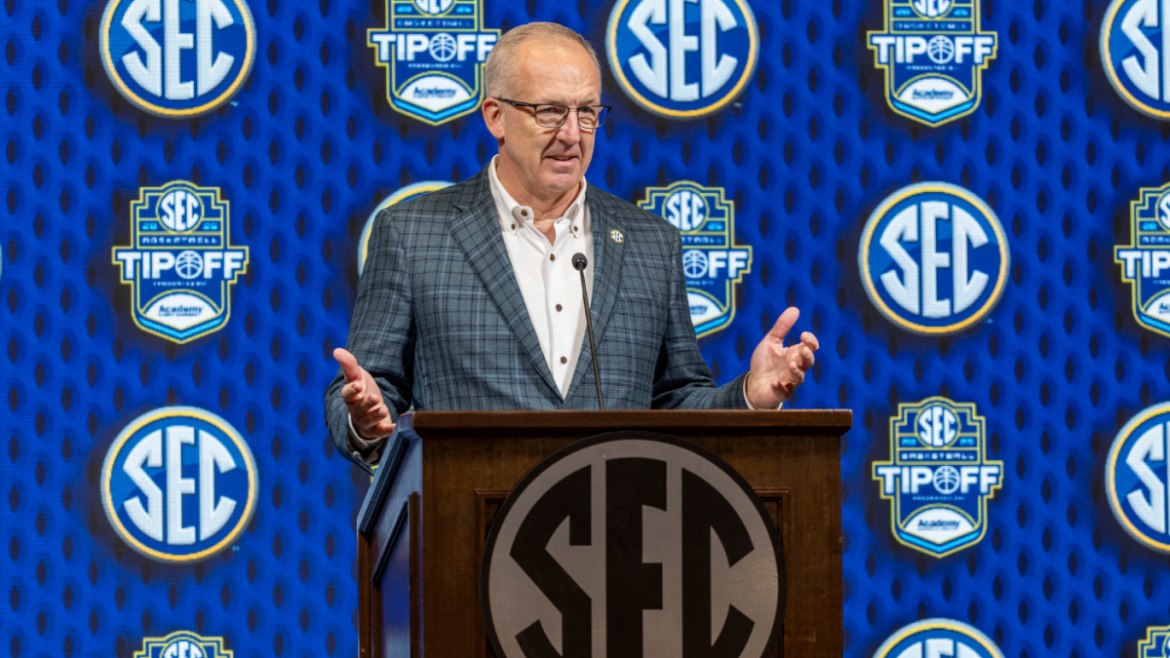The Evolving Role of SEC Commissioner Greg Sankey: Navigating College Sports’ Complex Landscape
The Southeastern Conference (SEC) under the leadership of Commissioner Greg Sankey has undergone remarkable transformations over the past decade. From football dominance to men’s basketball ascendance and adapting to new challenges like NIL (Name, Image, Likeness) rights and pandemic-related disruptions, Sankey’s tenure highlights a multifaceted approach to managing and advancing one of college sports’ most influential leagues. This analysis explores Sankey’s impact on the SEC’s strategic direction, with a focus on conference scheduling, the College Football Playoff (CFP), basketball prominence, and the future of collegiate athletics.
—
Steering Through Long-Term Conference Scheduling: A Persistent Puzzle
Effective scheduling within a major athletic conference like the SEC is foundational yet complicated. Greg Sankey has acknowledged ongoing challenges in establishing a schedule that balances competitiveness, TV appeal, and fairness across member schools. The persistent difficulty to formulate a long-term structure indicates the intricate balance of accommodating traditional rivalries, travel demands, and evolving NCAA rules.
The lessons from these scheduling complexities underline a broader issue in college sports governance: conventional models often fall short in the face of expanding conference memberships and heightened media scrutiny. Sankey’s administration grapples with the reality that an “old model” has not worked well for long-term sustainability. This realization has fueled incremental, careful adjustments but also invites future creativity to rethink scheduling paradigms entirely.
—
Guiding the SEC Through Football’s Power Dynamics and the College Football Playoff
In the realm of football, the SEC’s market position has never been stronger, and Sankey’s role as a powerful figure is evident in how the conference approaches the College Football Playoff discussions. The SEC’s ability to flex its influence in CFP deliberations illustrates Sankey’s strategic maneuvering to elevate the conference’s teams and maintain competitive advantage.
An area of particular focus has been the treatment of SEC championship games within the CFP committee’s framework. Sankey’s communications suggest an intent to ensure these high-stakes games are given proper valuation, impacting rankings and playoff selections. His approach appears to embrace a pragmatic understanding that systemic adjustments are needed when balancing equity among conferences within the playoff’s ranking algorithms.
—
SEC’s Ascendancy in Men’s Basketball: A New Frontier
Traditionally overshadowed by the football juggernaut, the SEC under Sankey has witnessed a notable rise in men’s basketball stature. With the SEC sending a projected 13 teams to the NCAA tournament in 2025, the conference is asserting itself as a major basketball power.
Sankey’s role in supporting basketball growth includes adapting conference policies, negotiating tournament arrangements, and leveraging media and branding opportunities to boost the sport’s profile. His tenure coincides with strategic moves that cater to basketball’s increasing importance in collegiate athletics revenue streams and fan engagement.
—
Embracing NIL and Crisis Management: Adaptive Leadership
The onset of NIL opportunities and the challenges imposed by the COVID-19 pandemic have tested leadership nationwide, and the SEC was no exception. Sankey’s decade in office covered the seismic shift from amateurism restrictions to more open-market NIL policies. His comments reflect a balancing act—protecting conference integrity while facilitating athlete empowerment.
During the pandemic, Sankey’s leadership helped navigate postponements, health protocols, and season pushes amid uncertainty. Managing a football season under these conditions demanded flexibility, collaboration, and decisive communication—a testament to his administrative acumen.
—
Forward-Looking Concepts: Super Leagues and Conference Realignment
The evolving college sports landscape sees the emergence of super league concepts such as “Project Rudy,” a simplified, football-focused league proposal distinct from previously publicized ideas. Discussions like this underscore the uncertainty and dynamism in major college sports conferences’ futures.
Sankey and SEC leadership must wrestle with these developments, balancing tradition, competitive fairness, member autonomy, and financial imperatives. The prospect of altered league structures could recalibrate power across conferences, impacting everything from media rights to recruitment.
—
Conclusion: Steering a Powerful Conference Toward Future Excellence
Greg Sankey’s tenure as SEC Commissioner reveals a leader deeply engaged in reshaping college sports amidst unprecedented change. His work in scheduling, CFP navigation, basketball enhancement, NIL adaptation, and crisis management highlight a nuanced, strategic approach to governance. As the SEC continues to evolve, Sankey’s ability to blend tradition with innovation will be crucial in sustaining the conference’s dominance and relevance.
The future of college sports is being written today with decisions that balance legacy and progress; Sankey’s influence on this narrative exemplifies how leadership can steer complex institutions through both turbulence and opportunity.





